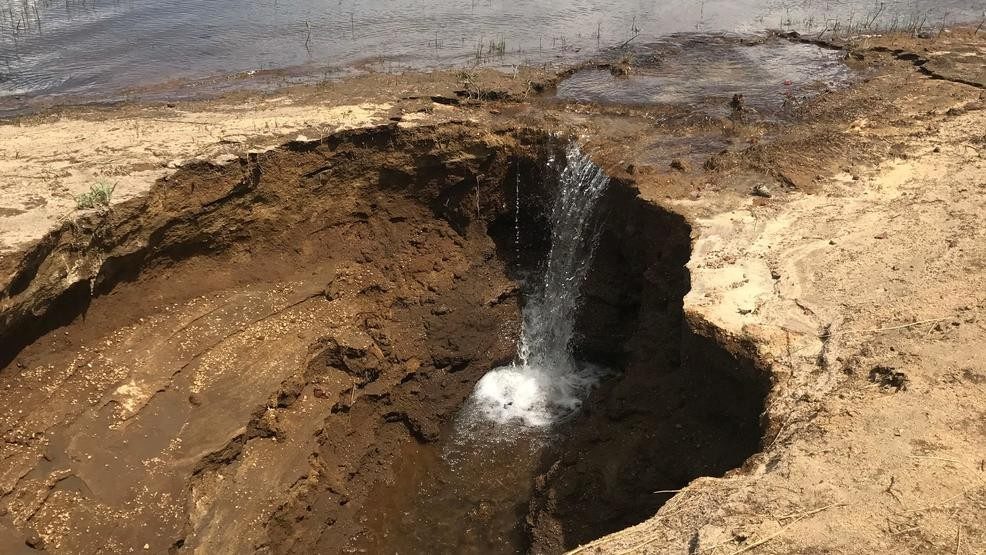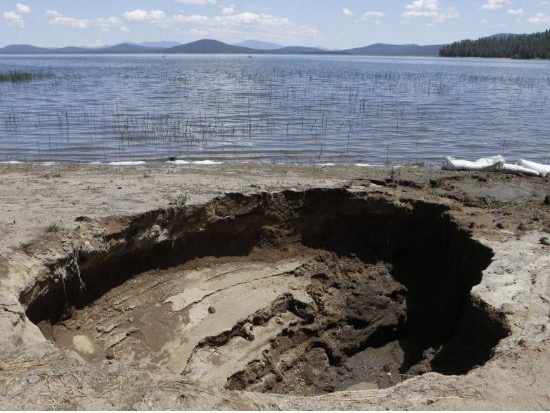
© KRAL
A sinkhole opened up on the edge of Wickiup Reservoir over the weekend — possibly due to a collapsed lava tube — but officials say water levels at the reservoir just west of La Pine are expected to remain stable.
Photos shared by the Deschutes National Forest earlier in the week showed water draining into the sinkhole. During a visit to the area on Tuesday, the hole was just above the water line. Crews with the North Unit Irrigation District, which operates the Wickiup Dam, placed sandbags to keep water from spilling in to the hole on Tuesday.
Dave Walsh, spokesman with the Bureau of Reclamation, said the hole is roughly 10 to 12 feet across and about 4 feet deep. He said a geologist who examined it on behalf of the bureau on Monday estimated water was flowing down the hole to parts unknown at around 900 gallons a minute.
The hole is located about 250 feet north of the Reservoir Campground boat launch. The Bureau of Reclamation has taped off the area to deter visitors from getting too close.

© Joe Kline/The Bulletin
The campground and boat launch remain open to the public.
Walsh said the geologists inspecting the hole cannot definitively say it is a collapsed lava tube, but it's the most likely explanation, given the region's volcanic geology.Kassidy Kern, spokeswoman for the Deschutes National Forest, said there could be unknown lava tubes a short distance beneath the surface all over Central Oregon. The best known emanate from the now-extinct Newberry Volcano, and include Lava River Cave near Sunriver and several other caves east of U.S. Highway 97.
A collapsed lava tube at Lost Lake off U.S. Highway 20 near Hoodoo Ski Area creates a seasonal drain effect, with the lake filling in spring as snowmelt rushes in faster than it can drain, then shrinking in summer once the snow has melted.
Walsh said once an inspection of the hole at Wickiup is complete, the Bureau of Reclamation and the North Unit Irrigation District will work together to create a plan on how to fill it to prevent future leakage.
He said dirt and concrete have been used in the past to successfully patch holes draining reservoirs, including at Wickiup.
Kern and Walsh both said because of the hole's location and size, it is not expected to drain any significant amount of water from the reservoir.
Even if the hole was closer to the bottom of the lake and left unfilled, it would take quite a while to empty the reservoir — at the previously estimated drainage speed, almost 98 years.


Reader Comments
to our Newsletter